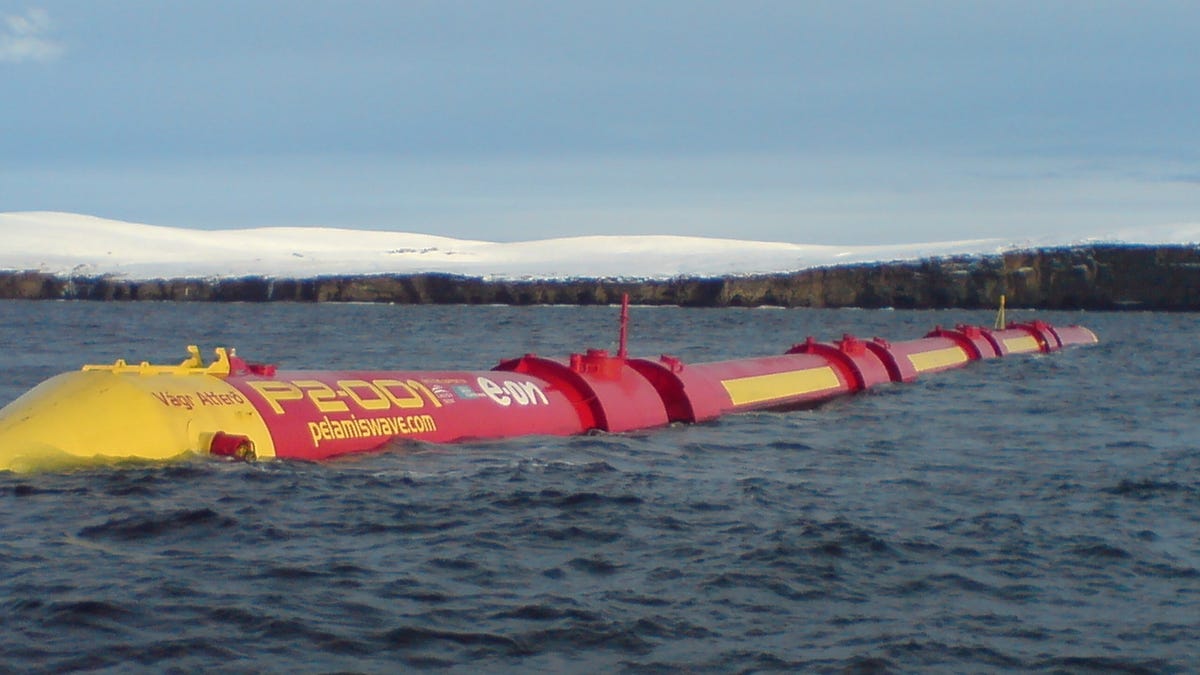U.K. wagers on large-scale wave power
The U.K. has nominated a proposed 28-megawatt wave energy project off the coast of Scotland to receive funding from the European Union.

The European Union will consider whether a massive wave energy project from Scotland should receive a piece of a renewable-energy and carbon reduction project fund that could total billions of euros.
The Pentland Orkney Wave Energy Resource (POWER) project was nominated this week by the U.K. government for the NER300, a fund managed jointly by the European Commission, European Investment Bank, and member states that's named after the 300 million carbon "allowances" being sold to raise the funds.
If approved, funded, and built, the wave energy farm would be the largest grid-connected wave energy farm in the world, according to the Scottish European Green Energy Centre.
The POWER project as currently proposed would place 24 wave energy converters from Pelamis Wave Power and 10 Oyster 3 wave energy converters from Aquamarine Power in the Orkneys off the coast of Scotland. They would tie in to the Scottish electric grid and, together, they would make up a 28-megawatt wave power farm.
The Pelamis wave energy converter is a floating serpentine machine made up of multiple sealed cylinders that each contain power modules, hydraulic cylinders, and motor generators. The cylinders are connected by two-direction hinged joints. Jostling by the motion of ocean waves in relation to the hinges enables the machine to generate electricity, and transfer it by subsea cable.
The submerged Oyster, meanwhile, is shaped like an oyster shell that opens and closes from wave motion. It uses that energy to pump a hydro-electric turbine back on land to produce electricity.
Perhaps not surprising from the island country, the U.K. nominated five projects among its 12 bids that would place green tech in its surrounding waters: the POWER project, three projects involving tidal turbines, and a project for 10 megawatts of offshore wind turbines.
The NER300 fund overall plans to invest in 34 renewable-energy projects, and eight carbon capture and storage projects. Each member country, including the U.K., will receive funding for at least one but no more than three projects each.

